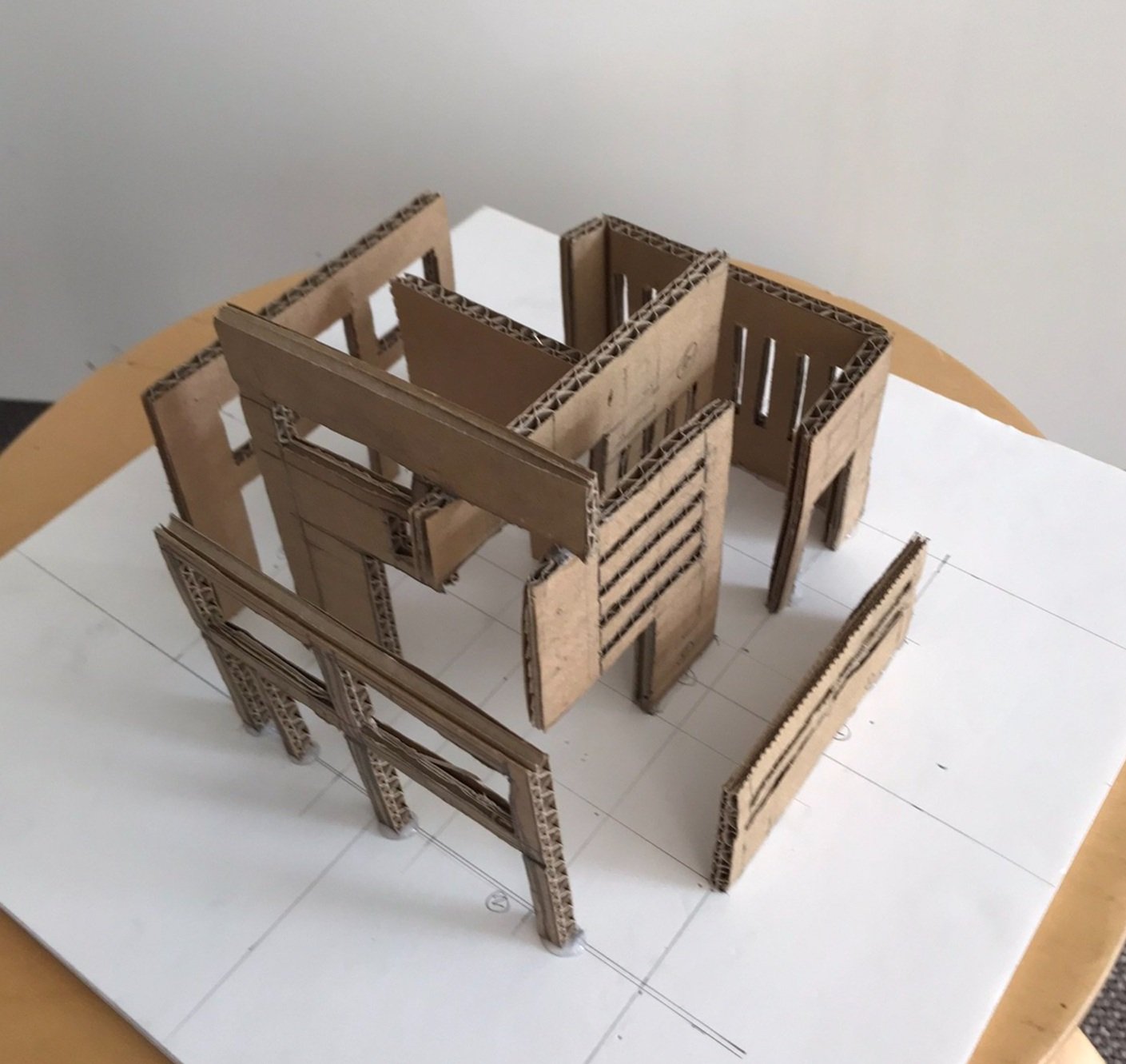Yasmin Watts’ practice is a conversation between hand and structure, between embodied intuition and architectural thought. Each work begins in rhythm: sketching, cutting, folding. Models built from cardboard and paper become spatial rehearsals—mapping out how form might breathe.
I build rhythm. I look for calm in structure.
I look for stillness in repetition.
I make space to wait. To rest. To hold. To be.
Her training in architecture informs her sensitivity to proportion and spatial choreography. But her sculptural methodology moves beyond function into material feeling. Repetition becomes language. Rhythm becomes structure.
Figures are developed through drawing and clay; refined by gesture, not symmetry. Their positioning is as critical as their form; they rest within space as if remembering something lost. Clay, wax, plaster and ash become tactile carriers of memory.
I carve space. I carve silence. I don’t fill it. I don’t explain.
I shape. I listen. I remember. I become.
Surface is never passive. It is carved, layered, pierced, coloured—always responsive. Pigments drawn from Zoroastrian tradition; flame reds, ash greys, verdant greens, binding material with heritage.
I was born from fire. Zoroastrian fire.
A memory of fire. A flame passed down.
Palm to palm. Mouth to mouth.
Still burning. I hold it.I sculpt with time and tension.
Each mark remembers something the body knew before language.
Sustainability is integral. Watts works with reclaimed materials; wood, metals, earth-based compounds, where rawness and refinement coexist. These materials don’t hide their past; they hold it.
Her process folds across disciplines. Painting becomes spatial. Sculpture becomes rhythmic. Light is used not as highlight, but as structure—shaping how space is felt.
Material has weight. It has temperature. It tells the truth.
You can touch it. It touches back.
Watts builds through listening: to materials, to absence, to proximity. This is a methodology not of production, but of attention.
I don’t explain. I shape. I listen. I remember.
I become.
I don’t begin with answers.
I build to ask.
I layer until something begins to breathe.
The result is a body of work that remembers through form; sculptures that don’t explain, but embody.
Concept stages
My making methods involve testing concepts with paper models.
Sculpting process
Sculpted figures captured from life models in pencil sketches, sculpted in clay and wax, cast in jesmonite and plaster and hand-painted.
Evolutions of a sculpted figure from sketch studies, sculpting in clay, 3D scan of sculpted figure to change scale and proportion, cast and hand-painted completed figure.















